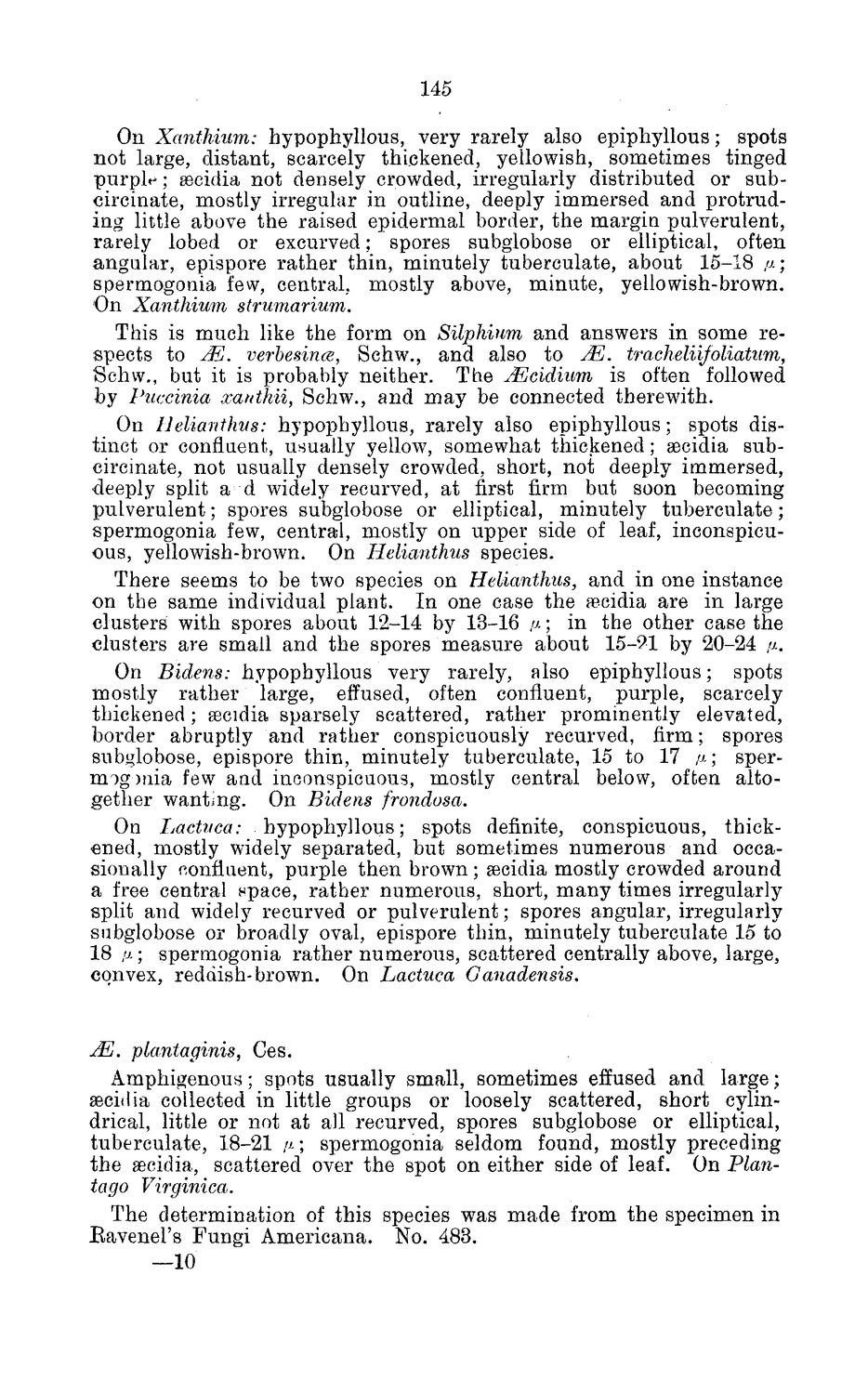| |
| |
Caption: Board of Trustees Minutes - 1884
This is a reduced-resolution page image for fast online browsing.

EXTRACTED TEXT FROM PAGE:
145 On Xanthium: hypophyllous, very rarely also epiphyllous; spots not large, distant, scarcely thickened, yellowish, sometimes tinged purple; secidia not densely crowded, irregularly distributed or subcircinate, mostly irregular in outline, deeply immersed and protruding little above the raised epidermal border, the margin pulverulent, rarely lobed or excurved; spores subgiobose or elliptical, often angular, epispore rather thin, minutely tuberculate, about 15-18 &; spermogonia few, central, mostly above, minute, yellowish-brown. On Xanthium strumarium. This is much like the form on Silphium and answers in some respects to M. verbesince, Schw., and also to M. tracheliijoliatnm, Schvv., but it is probably neither. The Mcidium is often followed by Puccinia xanthii, Schw., and may be connected therewith. On Helianthus: hypophyllous, rarely also epiphyllous; spots distinct or confluent, usually yellow, somewhat thickened; secidia subcircinate, not usually densely crowded, short, not deeply immersed, deeply split a d widely recurved, at first firm but soon becoming pulverulent; spores subgiobose or elliptical, minutely tuberculate; spermogonia few, central, mostly on upper side of leaf, inconspicuous, yellowish-brown. On Helianthus species. There seems to be two species on Helianthus, and in one instance on the same individual plant. In one case the a?cidia are in large clusters with spores about 12-14 by 13-16 /-/.; in the other case the clusters are small and the spores measure about 15-91 by 20-24 ,u. On Bidens: hypophyllous very rarely, also epiphyllous; spots mostly rather large, effused, often confluent, purple, scarcely thickened; aecidia sparsely scattered, rather prominently elevated, border abruptly and rather conspicuously recurved, firm; spores subgiobose, epispore thin, minutely tuberculate, 15 to 17 t±\ spermogmia few and inconspicuous, mostly central below, often altogether wanting. On Bidens frondosa. On Lactnca: hypophyllous; spots definite, conspicuous, thickened, mostly widely separated, but sometimes numerous and occasionally confluent, purple then brown; secidia mostly crowded around a free central space, rather numerous, short, many times irregularly split and widely recurved or pulverulent; spores angular, irregularly subgiobose or broadly oval, epispore thin, minutely tuberculate 15 to 18 ,u; spermogonia rather numerous, scattered centrally above, large, convex, reddish-brown. On Lactuca Canadensis. M. plantaginis, Ces. Amphigenous; spots usually small, sometimes effused and large; secidia collected in little groups or loosely scattered, short cylindrical, little or not at all recurved, spores subgiobose or elliptical, tuberculate, 18-21 /*; spermogonia seldom found, mostly preceding the secidia, scattered over the spot on either side of leaf. On Plantago Virginica. The determination of this species was made from the specimen in Eavenel's Fungi Americana. No. 483. —10
| |